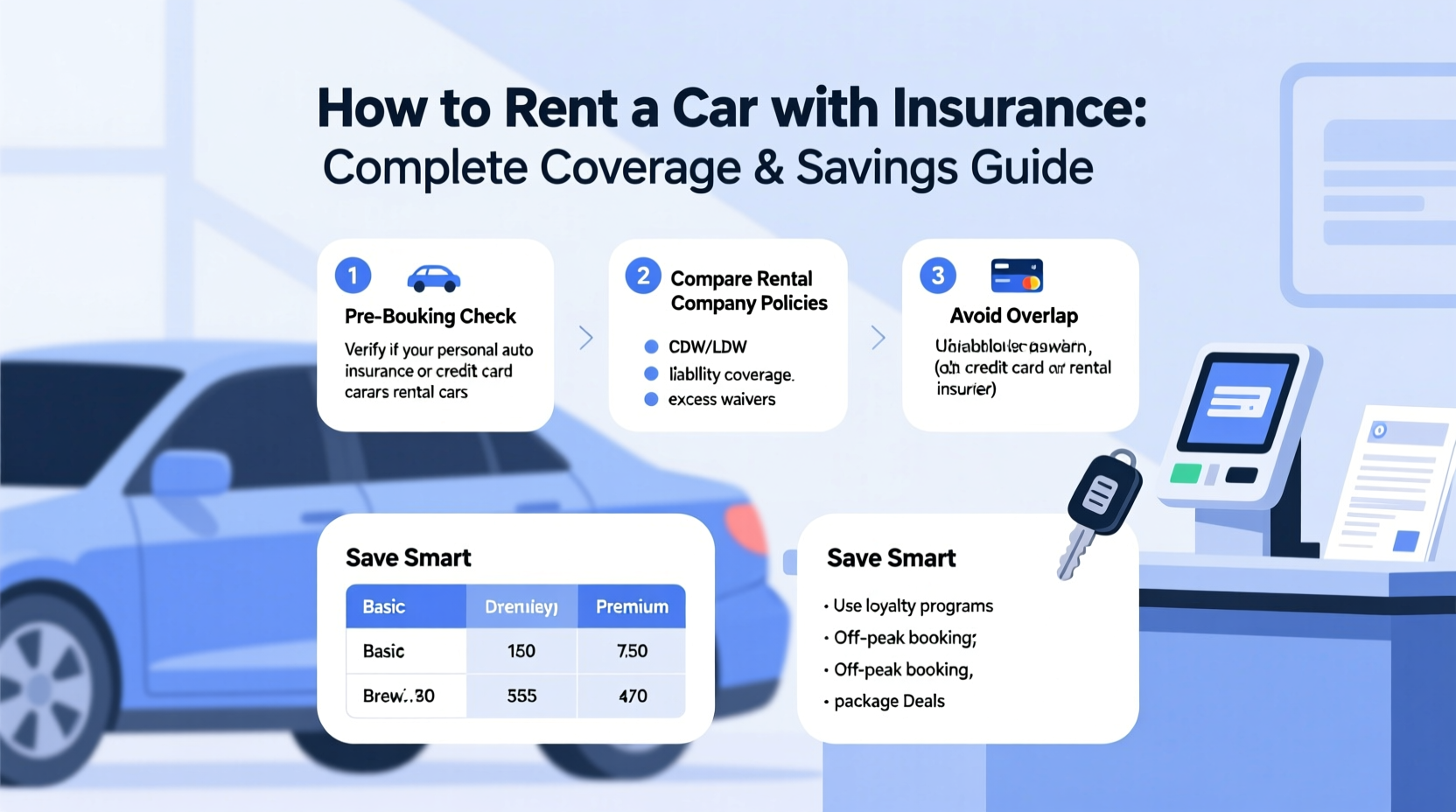Renting a car can be a convenient solution for travel, business trips, or temporary transportation needs. But without proper insurance coverage, an unexpected accident or damage could lead to steep out-of-pocket costs. Many renters assume they’re fully protected by their personal auto policy or credit card benefits—only to discover gaps when it matters most. Understanding how rental car insurance works, what options are available, and where you can safely decline unnecessary coverage is essential to both protection and cost efficiency.
Understanding Rental Car Insurance Options

When you approach the counter at a rental agency, you'll typically be offered several types of insurance add-ons. These are not mandatory in most cases, but knowing what each one covers helps you make informed decisions.
- Collision Damage Waiver (CDW) / Loss Damage Waiver (LDW): This isn't technically insurance but a waiver that releases you from financial responsibility if the car is damaged or stolen. It often comes with a high daily fee, sometimes $30 or more.
- Liability Insurance Supplement (LIS): Covers damages or injuries you cause to others in an accident. If your personal auto policy has low liability limits, this may provide additional protection.
- Personal Accident Insurance (PAI): Covers medical expenses for you and your passengers in case of injury during the rental period.
- Personal Effects Coverage (PEC): Reimburses lost or stolen personal belongings inside the rental vehicle. Often limited and usually redundant if you have homeowners or renters insurance.
Check Your Existing Coverage First
Before accepting any rental agency’s insurance offer, review three key sources of existing protection:
- Personal Auto Insurance: Most comprehensive and collision policies extend to rental vehicles within the U.S., covering damage to the rental car and third-party liability. Confirm this with your insurer before traveling.
- Homeowners or Renters Insurance: May cover personal items stolen from a rental car, reducing the need for PEC.
- Credit Card Benefits: Many premium credit cards automatically provide CDW coverage when you use the card to pay for the entire rental. However, conditions apply—such as declining the rental company’s own CDW and returning the car to the same country.
“Credit card rental insurance is real coverage, but it's secondary—meaning your personal auto policy pays first. Always check the fine print.” — David Lin, Consumer Protection Analyst at TravelRights.org
Step-by-Step Guide: How to Secure Proper Rental Car Insurance
Follow this timeline to ensure full coverage without overpaying:
- Two Weeks Before Rental: Contact your auto insurer to confirm rental coverage details. Ask specifically about collision, comprehensive, and liability extensions.
- One Week Before Rental: Review your credit card’s benefits document. Look for terms like “Rental Car Collision Damage Waiver” and note required actions (e.g., charging full amount to the card).
- At Pickup: Decline CDW/LDW only if confirmed covered by another source. Keep copies of your policy documents and credit card agreement handy.
- Inspect the Vehicle: Walk around the car with the agent, noting all existing scratches or dents on the rental agreement. Take photos or video for proof.
- During Rental: Drive responsibly. Avoid off-road use or unauthorized drivers, which void most coverages.
- At Return: Ensure the agent inspects the car again and confirms no new damage. Get a signed copy of the return receipt.
Smart Ways to Save on Rental Car Insurance
You don’t need to pay for every insurance option offered. Strategic decisions can reduce costs significantly.
| Insurance Option | Typical Daily Cost | When to Consider | When to Decline |
|---|---|---|---|
| CDW/LDW | $25–$35 | No personal auto insurance; international rental | Already covered by auto policy or credit card |
| LIS | $10–$15 | Low liability limits on personal policy | Your policy meets state minimums comfortably |
| PAI | $5–$10 | No health insurance; traveling abroad | Have health or travel insurance |
| PEC | $5–$7 | Carrying expensive electronics | Items covered under renters/homeowners policy |
Real-World Example: Avoiding a $4,000 Repair Bill
Sarah rented a car in Florida for a week-long family trip. At the counter, she declined the $32/day CDW, explaining she would use her Chase Sapphire Reserve card to pay and had verified its included primary rental coverage. She also refused PEC, knowing her renters insurance covered her laptop and camera.
On day five, she backed into a shopping cart, denting the rear bumper. The rental agent filed a claim for $3,800 in repairs. Sarah contacted Chase, submitted her rental agreement and photos of the pre-existing condition checklist, and within ten days, the charge was reversed. Her personal insurance remained untouched, and she paid nothing out of pocket.
This case highlights the importance of preparation and understanding layered protections. Had Sarah relied solely on the rental company’s CDW, she’d have paid nearly $225 extra. Instead, she saved money and avoided a claim on her auto history.
Frequently Asked Questions
Do I need rental car insurance if I have my own car insurance?
In most cases, your personal auto policy extends to rental vehicles in the U.S., covering damage and liability. However, it won’t cover personal belongings or medical expenses. Verify with your insurer whether your collision and comprehensive coverage applies and if there are any exclusions.
Does my credit card really cover rental car damage?
Yes, many major credit cards offer CDW coverage, but conditions vary. You must charge the full rental to the card, decline the rental company’s CDW, and return the vehicle in the same country. Coverage is typically secondary (your insurance pays first), though some premium cards offer primary coverage.
What happens if I get in an accident with a rental car?
First, ensure everyone is safe and call local authorities if needed. Document the scene with photos. Notify the rental company immediately and file a report. If you have personal insurance or credit card coverage, contact them next. Do not admit fault at the scene. Follow up in writing and keep all records.
Final Checklist Before You Rent
- ✅ Confirm your personal auto insurance covers rentals
- ✅ Check your credit card’s rental car benefit terms
- ✅ Decline duplicate coverage at the counter (if already protected)
- ✅ Inspect the car thoroughly and document pre-existing damage
- ✅ Carry proof of insurance and credit card benefits
- ✅ Know whom to call in case of an incident
Drive Confidently, Save Wisely
Renting a car doesn’t have to mean surrendering to high-pressure insurance sales tactics. With the right knowledge, you can protect yourself legally and financially while avoiding unnecessary charges. Whether you're navigating city streets or embarking on a cross-country journey, being prepared with the correct insurance strategy gives you peace of mind—and keeps more money in your wallet.









 浙公网安备
33010002000092号
浙公网安备
33010002000092号 浙B2-20120091-4
浙B2-20120091-4
Comments
No comments yet. Why don't you start the discussion?